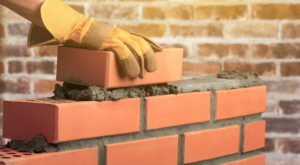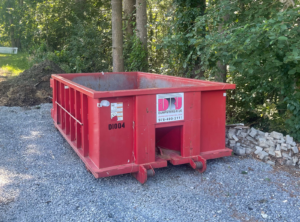Brick Mason Charleston SC build walls and other masonry structures using masonry materials like brick, concrete blocks and stone. This career requires hand-eye coordination and a strong work ethic. It also requires basic math skills to read blueprints and calculate the amount of building materials needed for each project.
Other qualifications include physical strength and stamina, along with a willingness to learn and take directions. Many brick masons eventually become supervisors for masonry contractors or even own their own businesses.

Brick masons must have physical stamina to endure long hours of labor on a construction site. This involves bending over and lifting heavy materials, as well as standing for prolonged periods of time in various weather conditions. Additionally, brick masons must be able to use tools with precision and dexterity in order to construct aesthetically pleasing and structurally sound buildings.
The first step in becoming a brick mason is to complete a vocational training program at a trade school or community college. These programs teach students about the various tools and materials that are used in the occupation. They also provide students with the opportunity to practice their skills in a real-world work environment. After finishing their studies, brick masons must gain hands-on experience by working as an apprentice or helper.
Once they have obtained the necessary skills and knowledge, brick masons can start their careers as professional brick masons. Their earnings depend on several factors, including their location and the type of industry they work in. Brick masons who are employed by commercial construction companies typically earn higher salaries than those working in residential construction.
A brick mason must be able to interpret blueprints and construction plans in order to construct a building according to specifications. This requires attention to detail and a strong grasp of mathematics, which is useful when measuring materials and determining the quantity needed for a project. Additionally, brick masons must have excellent problem-solving skills in order to overcome any construction challenges that may arise.
Masons must be able to mix mortar, which is a mixture of cement, sand, and water, in order to bind bricks together. This process requires attention to detail, as the mortar must be of the proper consistency in order for it to adhere properly. Masons also apply the mortar to brick walls and structures, using a trowel.
Brick masons who specialize in installing refractory tile and firebrick in high-temperature industrial settings may be referred to as refractory masons. These individuals are often hired to build and repair furnaces, cupolas, ladles, soaking pits, and other industrial equipment that requires a refractory wall in order to contain hot materials. These masons must have extensive knowledge of masonry techniques and be comfortable working with high temperatures.
Knowledge of Materials
Brick masons must possess an understanding of the various materials needed to construct brick buildings. This includes knowledge of stone, brick, mortar, and concrete. Having this understanding allows them to select the appropriate materials for specific projects and employ different construction methods in an efficient manner. It also helps them read construction blueprints, ensuring that they can correctly interpret and implement design specifications.
Brickmasons must also be able to identify and recognize defective or hazardous materials, which requires them to have strong analytical thinking skills. They also need to understand and follow established safety protocols when handling materials like power tools, ladders, and scaffolding. Lastly, brick masons must have the physical stamina to work long hours in physically demanding environments.
Before beginning the bricklaying process, brick masons must prepare the work area by clearing debris and ensuring a safe working environment. They then mix mortar, a combination of cement, sand, and water, to the correct consistency. This process is essential for the structural integrity of the building and requires a high level of precision. Brickmasons must also have the ability to accurately measure and cut bricks when necessary.
Depending on the type of project, brick masons may need to use various tools and equipment like trowels, levels, and brick hammers. They also need to know how to operate machines like mortar mixers, which allow them to prepare larger quantities of mortar more quickly. This can help them meet the demands of large projects and reduce the amount of time spent on each individual job site.
Brick masons who have a high level of expertise in their field often earn higher wages than those who are less experienced. They may also be eligible for supervisory positions, which can further boost their earning potential. In addition to monetary benefits, supervisory roles typically provide more opportunities for career advancement and professional growth. In some cases, brick masons may be required to obtain a license to work in their field. This typically involves completing a training course and passing a certification exam. However, licensing requirements vary by state.
Mathematical Skills
Brick masons have a wide range of skills that they use to build durable and visually appealing structures. These include masonry techniques, knowledge of different types of materials, and the ability to read construction blueprints. Having these skills allows them to execute projects with precision and adherence to safety protocols. The Blue-Collar Test for Brick Masons assesses these essential competencies and provides employers with a tool to select qualified candidates.
While no scientific exploration has been done to determine what personality traits make a successful mason, the career is often well suited for those who enjoy hands-on work and have strong technical abilities. They are typically self-directed and independent individuals who have an innate mechanical aptitude. In addition, those with ISTP personality types tend to be the best fit for this position, as they have an analytical mindset and enjoy building things that are useful and practical.
Before beginning their day on a construction site, brick masons review the blueprints for the structure they are working on. They carefully interpret these detailed plans to ensure that they understand the dimensions and specifications of each component of the building. After ensuring that they have a full understanding of the project, they move on to measuring and cutting the bricks. This process requires precision and accuracy, as a single miscalculation can significantly impact the integrity of the completed structure.
Once the brick mason has cut all of the necessary pieces, they are ready to begin laying them. This is a time-consuming process that requires patience and attention to detail. As each brick is placed, the mason checks that it is level with the previous layer and aligned in a precise manner. The mason also applies mortar between each brick, ensuring that it is evenly spread.
At the end of the day, brick masons take pride in the progress they have made and the craftsmanship they have displayed. As they clean up their workspace, they also look forward to the next project on which they will display their talents and abilities. The satisfaction they get from their work motivates them to continue honing their skills and pursuing excellence.
Communication Skills
Having strong verbal communication skills is critical for masons, as they need to collaborate with construction managers and other project team members on the work being completed. Masons also use these skills when interacting with clients, as they may need to explain complex designs or details in simple terms that non-experts can understand.
Other important communication abilities for masons include:
- Listening and responding to customer requests.
- Maintaining a clean work area.
- Adhering to safety regulations.
- Using their math skills to calculate the amount of materials needed for upcoming projects.
They also have the creativity to create unique structures that are both aesthetically pleasing and structurally sound, such as intricate stone walls or chimneys.
Masons also utilize their manual dexterity skills when laying bricks, as they must carefully and precisely manipulate their tools to follow blueprints and other instructions for each project. This requires them to have strong hand-eye coordination and fine motor skills, which is especially beneficial when creating aesthetically pleasing work or working in tight spaces where space is limited.
In addition to their physical requirements, masons need to have a high level of stamina to perform their job duties for long periods of time. This is because bricklaying and masonry can be physically demanding, requiring them to stand or kneel for extended periods of time as well as lift heavy materials. Additionally, masons must be able to operate machinery, such as power saws and power hammers, which require specific skills and knowledge to use safely.
In addition, masons must have a solid understanding of how different types of bricks and other materials interact with each other to create stable and durable structures. This requires them to be familiar with a variety of construction techniques and architectural styles, and it also helps them determine the best ways to construct each individual structure. A detailed portfolio that showcases this extensive knowledge can help masons demonstrate their competence to employers.





